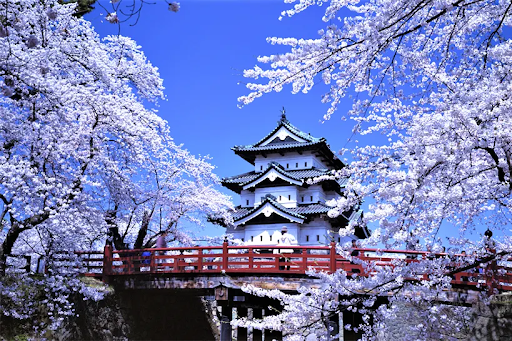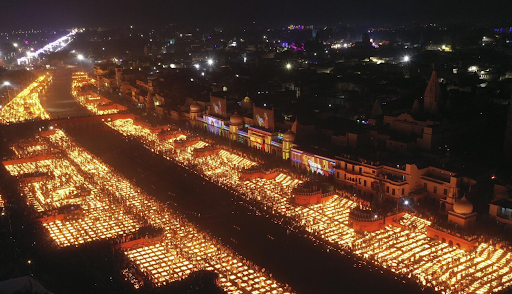Global Cultural Traditions: A Journey Through Unique Customs and Traditions
Introduction
In a world brimming with diversity, cultural traditions offer a window into the soul of a nation, reflecting its values, history, and way of life. These traditions, often passed down through generations, not only enrich the cultural tapestry of our global community but also provide a sense of identity and continuity. In this blog, we'll explore some of the most unique and fascinating customs from various corners of the globe, delving into the stories and significance behind them.
1. Japan: Hanami (Cherry Blossom Viewing)
Every spring, Japan transforms into a wonderland of pink and white as cherry blossoms, or sakura, burst into bloom. Hanami, which literally means "flower viewing," is a time-honored tradition where people gather in parks to admire the fleeting beauty of these blossoms. The practice dates back over a thousand years to the Nara period (710-794), originally linked to agricultural rites and later associated with the elite of the Heian period (794-1185).
Significance: Hanami symbolizes the ephemeral nature of life, highlighting the beauty and transience of existence. It's a time for reflection, celebration, and bonding with family and friends under the blooming cherry trees.
2. India: Diwali (Festival of Lights)
Diwali, also known as Deepavali, is one of India's most celebrated festivals. It marks the triumph of light over darkness and good over evil. According to Hindu mythology, Diwali commemorates the return of Lord Rama to his kingdom after a 14-year exile and his victory over the demon king Ravana.
Traditions: Homes are illuminated with oil lamps and colorful rangoli designs, and fireworks light up the night sky. Families come together to perform rituals, share sweets, and exchange gifts.
Significance: Diwali is a time for renewal, prosperity, and the strengthening of familial and social bonds. It underscores the importance of light and knowledge in dispelling ignorance and negativity.
3. Spain: La Tomatina
Every August, the small town of Buñol in Spain hosts one of the world's most exuberant and messy festivals: La Tomatina. Thousands of participants gather to hurl overripe tomatoes at each other in what can only be described as a massive, friendly food fight.
Origin: The origins of La Tomatina are somewhat murky, with various theories suggesting it started as a local food fight among friends or as a protest that got out of hand. Regardless, it has become a globally recognized event since its inception in the mid-20th century.
Significance: While La Tomatina might seem like pure fun, it also serves as a release of communal energy and a celebration of camaraderie. The festival emphasizes the joy of shared, carefree experiences.
4. Mexico: Día de los Muertos (Day of the Dead)
Día de los Muertos is a vibrant Mexican tradition that honors deceased loved ones. Celebrated from October 31 to November 2, it combines indigenous Aztec rituals with Catholic influences introduced by Spanish colonizers.
Traditions: Families create altars (ofrendas) adorned with photos, favorite foods, and mementos of the departed. Marigold flowers, sugar skulls, and candles are also prominent. People dress up as skeletons and participate in parades and festivities.
Significance: Rather than mourning death, Día de los Muertos celebrates the lives of the deceased and the enduring connection between the living and the dead. It's a profound expression of love and remembrance.
5. China: Chinese New Year
Chinese New Year, also known as the Spring Festival, is the most important traditional holiday in China. It marks the beginning of the lunar new year and is celebrated with a range of customs and festivities that last for about 15 days.
Traditions: Preparations include cleaning homes to sweep away bad luck, decorating with red lanterns and couplets, and setting off fireworks to ward off evil spirits. The reunion dinner on New Year's Eve is a significant event, bringing together family members from near and far.
Significance: Chinese New Year is a time for family reunions, honoring ancestors, and welcoming a fresh start with hopes for prosperity and good fortune in the coming year.
6. Brazil: Carnival
Brazil's Carnival is one of the largest and most famous festivals in the world, drawing millions of people to its vibrant parades and street parties. Held just before Lent, it is a time of exuberant celebration and indulgence.
Traditions: The most iconic events take place in Rio de Janeiro, where samba schools compete in elaborate parades featuring dazzling costumes, music, and dance. Street parties, known as blocos, are also a major part of the festivities, with people dancing and celebrating in the streets.
Significance: Carnival is a celebration of life, culture, and creativity. It allows for a period of freedom and joy before the more somber season of Lent, emphasizing the Brazilian spirit of festivity and community.
7. South Africa: Ubuntu
Ubuntu is not a festival or event but a deeply ingrained cultural philosophy in South Africa and other parts of Africa. The term originates from the Nguni Bantu languages and can be translated as "I am because we are."
Principle: Ubuntu emphasizes communal relationships, compassion, and human interconnectedness. It promotes the idea that our humanity is shaped by our interactions with others and that kindness and mutual support are essential to societal well-being.
Significance: In practice, Ubuntu fosters a sense of unity and collective responsibility. It played a crucial role in South Africa's transition from apartheid to democracy, as leaders like Nelson Mandela and Desmond Tutu championed its principles to promote reconciliation and nation-building.
8. Scotland: Hogmanay
Hogmanay is the Scottish celebration of New Year's Eve, marked by unique customs and vibrant festivities that often extend into the early hours of New Year's Day.
Traditions: One of the most distinctive traditions is "first-footing," where the first person to enter a home after midnight brings gifts like coal, shortbread, and whisky to symbolize warmth, food, and good cheer for the coming year. Edinburgh hosts one of the world's largest Hogmanay street parties, complete with concerts, fireworks, and a torchlight procession.
Significance: Hogmanay reflects Scotland's rich cultural heritage and the importance of hospitality and community. It's a time for reflection, celebration, and looking forward to new beginnings with hope and optimism.
9. Pakistan: Basant Festival
Basant, also known as the Kite Festival, is a traditional festival in Pakistan celebrated to mark the arrival of spring. It is particularly popular in the Punjab region, especially in Lahore.
Traditions: During Basant, the skies are filled with colorful kites as people of all ages engage in kite flying competitions. Homes and streets are decorated with vibrant hues, and rooftop parties are common, accompanied by traditional music and food.
Significance: Basant is a celebration of renewal and the joyous spirit of spring. It brings communities together, fostering a sense of unity and collective happiness. The festival also highlights the rich cultural heritage of Pakistan, blending traditional customs with contemporary celebrations.
Conclusion
Cultural traditions are the heartbeat of societies around the world, offering insights into their values, histories, and worldviews. From the contemplative beauty of Japan's Hanami to the vibrant chaos of Spain's La Tomatina, these customs enrich our global heritage and remind us of the diverse ways humanity finds meaning, joy, and connection. As we explore and appreciate these traditions, we foster greater understanding and unity in our increasingly interconnected world.











.png)

.jpg)

.png)
0 Comments